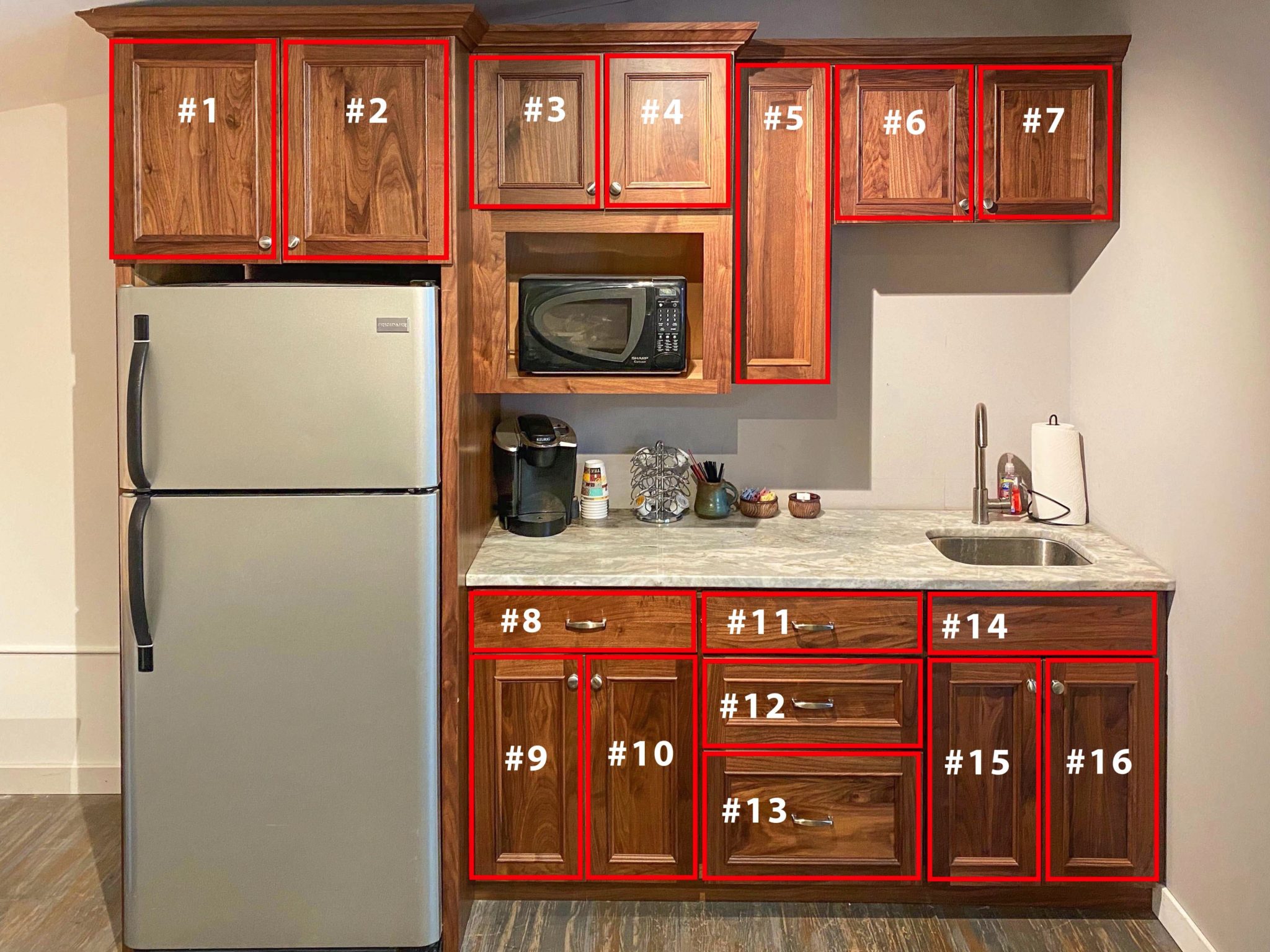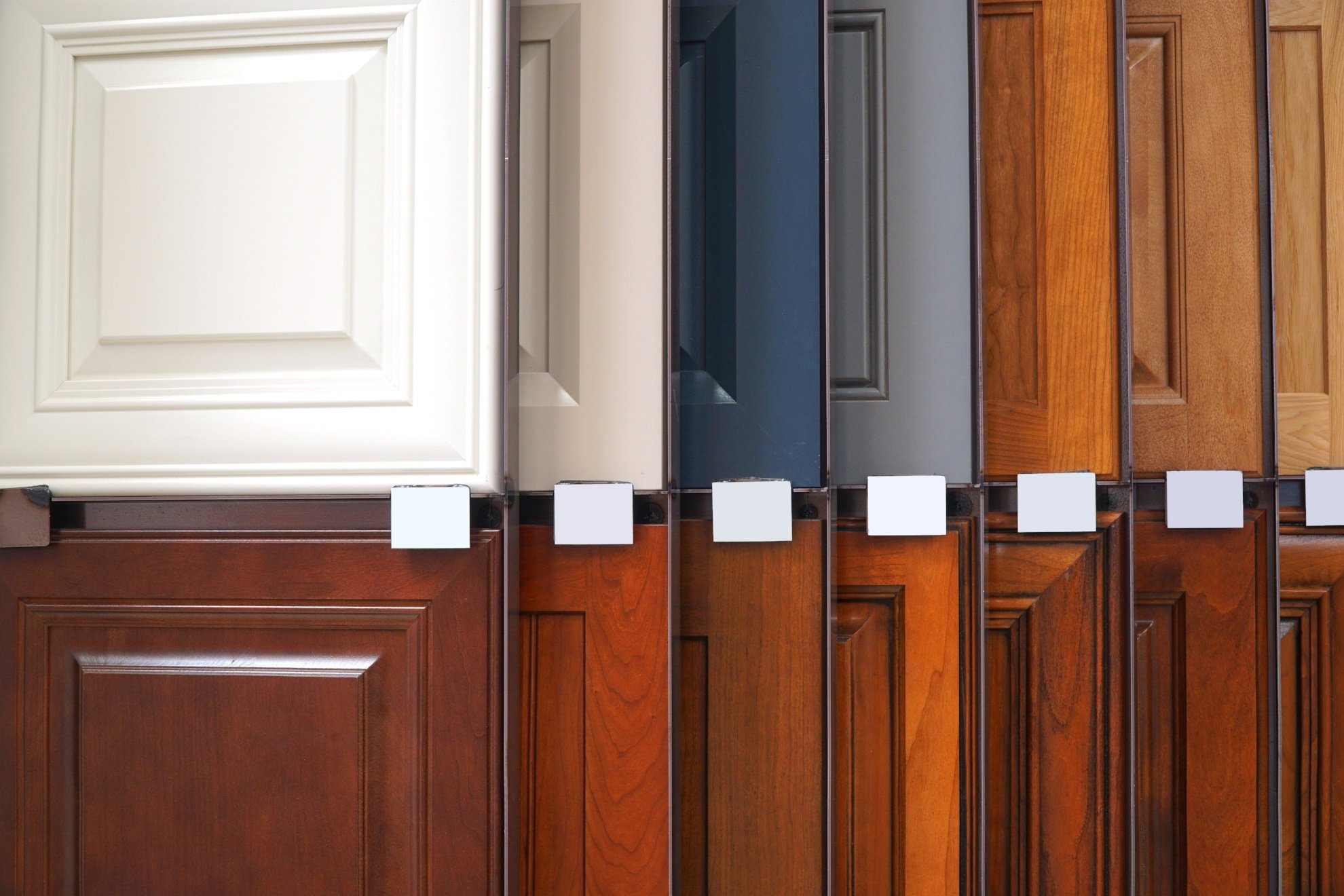Planning and Preparation

Replacing your kitchen cabinet doors with glass can instantly transform the look of your kitchen, adding a touch of elegance and making the space feel more open and airy. This project can be a rewarding DIY endeavor, but careful planning and preparation are crucial for a successful outcome.
Benefits of Replacing Kitchen Cabinet Doors with Glass
Replacing your kitchen cabinet doors with glass offers several advantages, making it a popular choice for homeowners seeking to update their kitchens.
- Enhanced Aesthetics: Glass doors create a modern and sophisticated look, allowing you to showcase your beautiful dishes, glassware, and other kitchen essentials. They can also make your kitchen appear larger and brighter by reflecting light.
- Increased Functionality: Glass doors provide easy visibility of your stored items, eliminating the need to open and close cabinets constantly. This makes finding what you need quick and convenient.
- Improved Organization: By showcasing your kitchenware, glass doors encourage you to keep your cabinets organized and clutter-free.
- Enhanced Light Reflection: Glass doors reflect light, making your kitchen feel brighter and more spacious, especially in rooms with limited natural light.
Types of Glass for Cabinet Doors
Choosing the right type of glass for your cabinet doors is essential to achieving the desired aesthetic and functionality. Here are some common types of glass used for cabinet doors:
- Clear Glass: Clear glass offers maximum visibility and allows you to showcase your kitchenware in its entirety. It’s ideal for creating a modern and minimalist look.
- Frosted Glass: Frosted glass provides a translucent finish, obscuring the contents of your cabinets while still allowing light to pass through. It offers a more subtle and elegant look compared to clear glass.
- Textured Glass: Textured glass comes in various patterns, adding visual interest and depth to your cabinets. It can create a more traditional or contemporary look depending on the pattern chosen.
- Mirrored Glass: Mirrored glass can make your kitchen feel larger and brighter by reflecting light and creating an illusion of space. It’s a bold choice that can add a touch of glamour to your kitchen.
- Colored Glass: Colored glass adds a pop of color and personality to your kitchen. It’s available in a wide range of hues, allowing you to match your existing decor or create a unique statement.
Tools and Materials Needed
Before you begin, gather all the necessary tools and materials to ensure a smooth and efficient project.
- Safety Glasses and Gloves: Protect your eyes and hands from potential hazards during the project.
- Measuring Tape: Accurate measurements are crucial for a perfect fit. Choose a tape measure that is long enough to measure your cabinets and doors.
- Level: Ensure your new cabinet doors are installed straight and level.
- Pencil: Mark your measurements and any other necessary details on the cabinet doors.
- Screwdriver: Use a screwdriver to remove and install hinges and other hardware.
- Drill: Drill pilot holes for screws and other hardware to prevent splitting the wood.
- Power Sander: Sand the edges of your cabinet doors to create a smooth finish.
- Wood Glue: Securely attach the new glass panels to the cabinet doors.
- Clamps: Hold the glass panels in place while the wood glue dries.
- New Cabinet Doors: Choose doors that fit your existing cabinets and match your desired style.
- Glass Panels: Select the type of glass that suits your aesthetic preferences and functionality needs.
- Hinges: Ensure the hinges are compatible with your existing cabinets and new doors.
- Screws: Use screws that are appropriate for the material of your cabinets and doors.
- Finishing Touches: Optional materials such as paint, stain, or varnish to personalize your cabinet doors.
Measuring Cabinet Doors
Accurate measurements are essential for a successful project. Here are some tips for measuring your cabinet doors precisely:
- Remove Existing Doors: Remove the existing doors from the cabinets to ensure accurate measurements.
- Measure Height and Width: Measure the height and width of each cabinet door, including the thickness of the frame. Record your measurements carefully.
- Measure Hinge Placement: If you are reusing the existing hinges, measure the distance from the top and bottom of the door to the hinge locations.
- Measure the Depth: Measure the depth of the cabinet to ensure the new doors will fit properly.
- Double-Check Measurements: Repeat your measurements to ensure accuracy and avoid mistakes.
Removing Existing Doors: How To Replace Kitchen Cabinet Doors With Glass

The first step in replacing your cabinet doors is to remove the existing ones. This process requires careful handling to avoid damage to the doors, frames, or your hands.
Removing Hinges, How to replace kitchen cabinet doors with glass
Hinges connect the cabinet door to the cabinet frame. To remove the hinges, you’ll need a screwdriver that matches the hinge screws.
- Locate the screws that hold the hinge to the door and the frame. These screws are typically located on the sides of the hinge.
- Use a screwdriver to loosen the screws, turning them counterclockwise.
- Once the screws are loose enough, gently lift the hinge off the door or frame.
- Repeat this process for each hinge on the door.
Removing Handles
Cabinet door handles are typically attached with screws or a simple push-in mechanism.
- Locate the screws holding the handle in place. They are usually on the back of the handle.
- If the handle has screws, use a screwdriver to remove them.
- If the handle is push-in, gently pry it off the door with a flat-head screwdriver.
Storing Removed Doors
After removing the doors, it’s essential to store them safely to avoid damage.
- Place the doors flat on a clean, padded surface, such as a blanket or cardboard box.
- Avoid stacking doors on top of each other, as this can cause warping or damage.
- If you have multiple doors, consider using a door storage rack to keep them organized and prevent damage.
Cleaning and Preparing Cabinet Frames
Once the doors are removed, you can clean and prepare the cabinet frames for the new doors.
- Remove any dust, dirt, or debris from the cabinet frames using a damp cloth.
- If the frames have any paint chips or scratches, you can touch them up with paint that matches the existing finish.
- Make sure the frames are completely dry before installing the new doors.
Installing New Glass Doors

With the cabinet frames prepped and ready, it’s time to install your stunning new glass doors. This process involves attaching the doors to the frames, securing them in place, and ensuring a perfect fit. Let’s dive into the steps.
Installing Hinges
Hinges are the workhorses of cabinet doors, providing smooth opening and closing. Installing them correctly is crucial for a flawless look and function.
- Choosing the Right Hinges: Select hinges specifically designed for glass doors. These hinges often feature a special mounting plate or bracket that securely holds the glass. Look for hinges made of durable materials like stainless steel or brass, which resist rust and wear.
- Placement and Marking: Determine the hinge placement on the door and cabinet frame. Typically, hinges are placed at the top and bottom of the door, with a third hinge in the middle for larger doors. Mark the hinge locations with a pencil.
- Attaching the Hinges: Use a drill and appropriate drill bits to create pilot holes for the hinge screws. Install the hinge plates to the cabinet frame first, followed by attaching the hinge to the glass door. Be sure to use screws that are designed for glass to prevent cracking.
Securing Glass Doors
While hinges provide the primary support, additional methods can further secure the glass doors and prevent them from rattling or shifting.
- Clips: Glass door clips are small, spring-loaded clamps that attach to the cabinet frame and grip the edges of the glass. These clips provide a secure and discreet hold, preventing the door from moving.
- Magnetic Catches: Magnetic catches are often used in conjunction with hinges, offering a strong and silent closure. The magnetic component on the cabinet frame pulls the door closed, ensuring a tight fit.
- Brackets: For heavier glass doors, additional support may be required. Brackets can be attached to the cabinet frame and the back of the glass door, providing extra stability and preventing sagging.
Aligning and Adjusting
Once the doors are installed, ensuring they open and close smoothly and align perfectly is essential.
- Checking for Level: Use a level to verify that the doors are perfectly plumb (vertical) and square (horizontal). Make adjustments to the hinge screws as needed.
- Fine-Tuning the Fit: If the doors are rubbing against the frame, slightly loosen the hinge screws and make minor adjustments to the door position. Tighten the screws once the doors are aligned properly.
- Gap Consistency: Ensure consistent gaps between the doors and the frame. This creates a clean and professional look. Adjust the hinge screws as necessary to achieve even gaps.
Installing Hardware
With the doors securely in place, it’s time to add the finishing touches – the hardware.
- Choosing Hardware: Select handles or knobs that complement the style of your kitchen and the glass doors. Consider materials like stainless steel, brass, or nickel for durability and a polished look.
- Drilling Holes: Carefully mark the locations for the hardware on the glass doors. Use a drill bit specifically designed for glass to prevent cracking. Create pilot holes first and then drill the full-size holes for the hardware.
- Installing Hardware: Attach the hardware to the doors using screws or clips, depending on the hardware design. Ensure the hardware is securely fastened to prevent it from loosening over time.
How to replace kitchen cabinet doors with glass – Replacing your kitchen cabinet doors with glass is a great way to instantly upgrade your space. If you’re going for a custom look, explore the world of custom glass cabinet doors for endless design possibilities. From frosted to etched, stained to patterned, these doors add a touch of elegance and allow you to showcase your beautiful dishware.
Remember, before you dive into the project, measure your existing doors carefully to ensure a perfect fit for your new glass panels.
Replacing your kitchen cabinet doors with glass can instantly elevate the look of your space, bringing in light and showcasing your beautiful dishes. If you’re looking for even more visual impact, consider incorporating a wall mounted glass cabinet to display your favorite items.
This can be a stunning addition to your kitchen, adding both functionality and style. Once you’ve decided on the glass cabinet doors for your lower cabinets, you can then think about adding a wall-mounted glass cabinet for extra storage and visual appeal.
